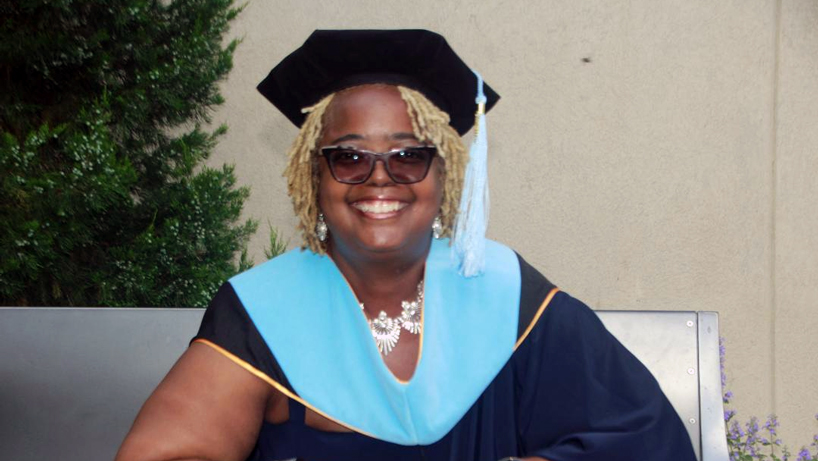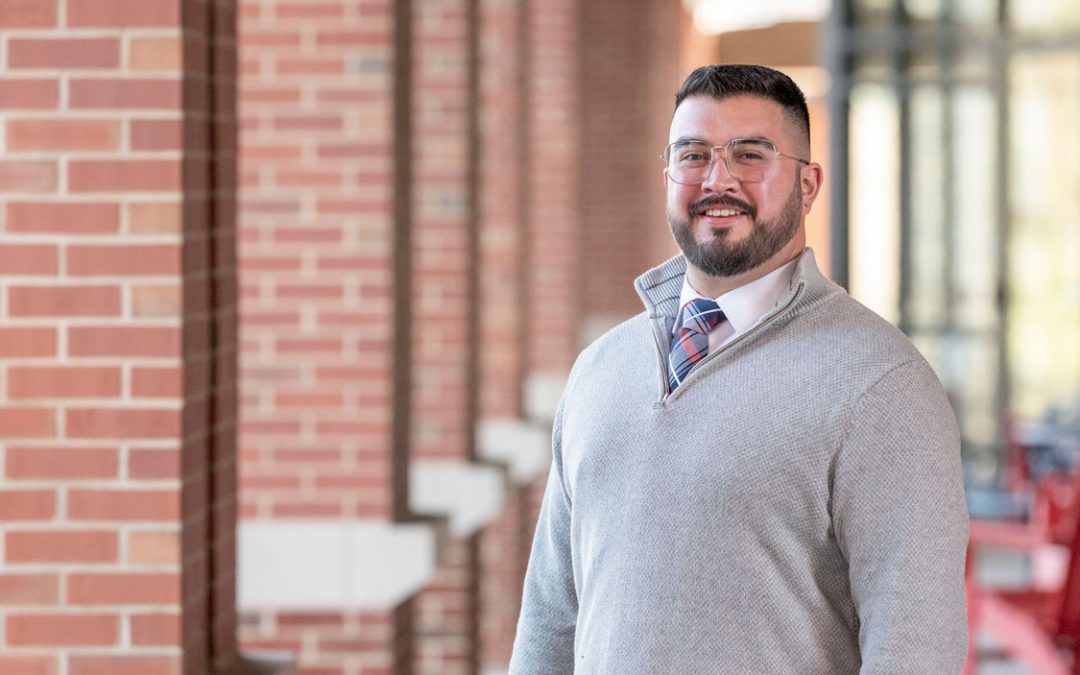
Vielia Jeffries-Evans won the 2020 Missouri Art Education Association’s Larry A. Kantner Art Education Research Award Endowment for her dissertation research. She examined how to develop elementary school students’ critical thinking skills in art class. (Photo courtesy of Vielia Jeffries-Evans)
Choice paralysis is familiar to many adults who’ve scrolled aimlessly through Netflix, frozen in the face of so many options.
Vielia Jeffries-Evans, a 2019 University of Missouri–St. Louis EdD graduate and art teacher at Jackson Park Elementary School in University City, noticed children face similar difficulties when presented with numerous choices.
“I discovered that my students – when I gave them all these options like painting, sewing and ceramics – didn’t know how to think for themselves unless I showed them what to do every step of the way,” Jeffries-Evans said.
She observed this while practicing “choice art,” a form of instruction where control shifts from teacher to students as they explore their own ideas through media of their choosing. She started to wonder if there was a way to help them feel more comfortable doing so. Her experiences led her to investigate that question for her EdD dissertation at UMSL. That research went on to win the 2020 Missouri Art Education Association’s Larry A. Kantner Art Education Research Award Endowment.
“Dr. Jeffries-Evans created an extraordinary dissertation focused on how implementing choice-based art pedagogy into her elementary art classroom strengthened her students’ critical thinking skills and studio habits of mind,” said Jennifer Fisher, UMSL art education coordinator and assistant teaching professor. “Guiding her through the process was a professional joy, in a large part due to her exemplary work ethic and positive disposition. I am proud to be her colleague in art education.”
The award was supposed to be presented to Jeffries-Evans at the MAEA Spring Conference, scheduled for March 19-21 in St. Louis. However, due to the spread of the novel coronavirus, the conference was canceled. Still, she felt honored even without the ceremony.
“I was just so humbled that I was chosen and that I had the support that I did,” Jeffries-Evans said.
When Jeffries-Evans started thinking about the subject, she was finishing a master’s program in gifted education at another local university. She had always wanted to pursue a doctorate, but curriculum development and administration didn’t appeal to her.
It left her options for a doctoral program limited until she started looking into the College of Education’s innovative EdD cohorts, which are designed to rethink traditional education models and be completed in about three years.
“I wanted something more creative, and I wanted to be able to still work with children,” Jeffries-Evans said. “I didn’t want to come out of the classroom. So, when UMSL offered the program in Creativity and Generative Design, I felt like that was something that opened up so many more doors in education.”
It was close to the application deadline, but Jeffries-Evans felt her faith had guided her to the next step in her life. She was also comforted by the cohort model.
“It was less intimidating knowing that I would be with a group of people to share this experience,” she said. “That also helped me want to do it because I’m a social person.”
The key challenge during her dissertation research, which was conducted in her classroom, was helping students pull from their own experiences and apply their interests to art. Jeffries-Evans said prioritizing what students like helps them feel more confident about working on their original ideas.
It was a slow process at first, as students were used to getting approval to move forward with assignments and constantly asked permission. Jeffries-Evans decided to recalibrate her approach to acclimate her classes.
She started with themes to get students thinking of ideas on their own. For example, she asked them what they liked to do during the fall or what reminded them of the season – jumping in leaves, apple picking or Halloween. In other cases, she would make it more personal by using pop-culture touchstones, asking the students about their favorite movies or TV shows.
“Once I made it personal to them, they were able to come up with more things to add,” she said. “We would document it by them writing or telling me more about why they liked it and what experiences they had.”
One project that stood out during her research was designing “fun places.” There were some guidelines – each student needed to include entrances and exits, restrooms, food and places to congregate – but other than those requirements, they were free to create personal amusement parks.
“I said, ‘The other thing is, you have to come up with your own name,’” Jeffries-Evans said. “Me teaching them to name things for themselves is also a big part of it. I told them, ‘You can’t call it Six Flags or Disney World because they already exist. There has to be something else to it that makes it just yours.’”
While there was a learning curve, the strides her students took were incredible. At one point, they even became the teachers.
“I had students showing me how to crochet because it was part of our fiber studio, but I didn’t know how to do it,” she said. “They came and sat and showed me how.”
Going straight from a master’s program into a doctoral program was difficult, but Jeffries-Evans credits her family, church and cohort members for providing constant love and support throughout the entire process.
Her dissertation team, which nominated her for the award, included Fisher, Phyllis Balcerzak and Shea Kerkhoff – both professors in the Department of Educator Preparation and Leadership. They each noted her dedication despite the challenging task.
“She held to her complex instructional design even though it presented her with complicated research analysis,” Balcerzak said.
Kerkhoff is confident the research will go on to help others.
“Vielia transformed her teaching through an inquiry process that involved risk-taking, critical analysis and deep reflection,” Kerkhoff said. “Sharing her inquiry with other art educators will no doubt transform other teachers’ practices too. That is what great research does.”
Jeffries-Evans didn’t set out for recognition, though. She just wanted to provide another choice for students – a place to thrive creatively.
“My desire was to reach that student that did not feel as confident in reading, math and science, so they could have an outlet in art,” she said. “We’re not all going to excel in the same things, and I wanted the arts to be something that was an option.”














